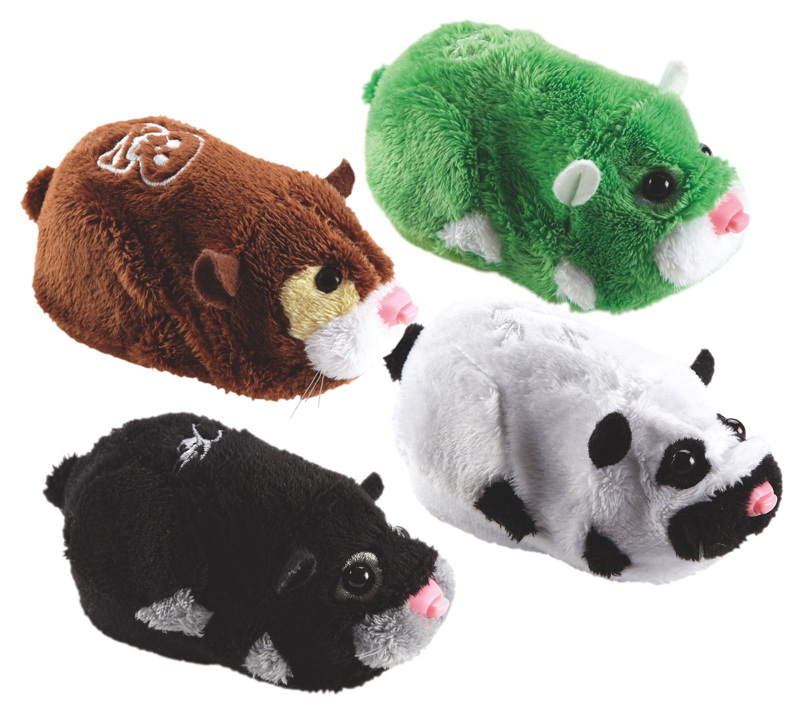Santa’s elves have gone home
Popular toys such as zhu zhu hamsters could be in short supply this year
They’re called zhu zhu pets and, according to their owner, Surrey-based toy company Character Group, they offer all the warmth and cuddliness of real hamsters “without the mess and smells”.
They’re also hard to get hold of. Demand for the product is “far outstripping our ability to satisfy ahead of Christmas”, the company announced on 1 December. Shortages of this year’s hot Christmas plaything are nothing new. But this year’s toy scarcity isn’t just driven by demand. There’s also trouble in Santa’s Chinese workshops.
These are concentrated in the Pearl River Delta, in southern China’s Guangdong Province, where 8,000 factories provide the world with 80 per cent of its toys.
It’s a business that relies heavily on tens of millions of migrant labourers from China’s rural heartland, prepared to endure long hours, low pay and dangerous working conditions to make the toys that put the smiles on the faces of British children on Christmas morning.
But this year, Santa’s elves seem to have got a better offer. Three million toy factory workers went home for the annual spring festival break this year. And they never came back.
As a result, retailers across Britain are now facing a toy shortage.
“This year we would probably need to have ordered in July in order to get stock in on time,” Alan Simpson, managing director of retailers Toytown, told the BBC. “So if a line is very popular, we simply cannot respond quickly enough.”
Neil Saunders, a retail analyst with Verdict research, added:?“There’s always that must-have toy and we always run short. But that could be exacerbated this year because the supply out of China hasn’t been as great as it should have been. We could easily see some of the popular items run out.”
It’s a shortage that has multiple causes. Stricter safety regulations have driven up production costs. Provincial governments across China have mandated increases in local minimum wages by an average of over 20 per cent. In Guangdong, the minimum monthly wage is now just over 1,000 yuan in the cities. That’s around £100 – yet still apparently still too much for some manufacturers.
Another cause lies in China’s response to the global financial crisis. China has forced its banks to lend as part of a recovery package worth £586 billion. Much of this has gone into investment in rural areas and China’s interior provinces. So Santa’s elves can get a job back home.
“It is certainly the case that many factories in the Pearl River Delta are closing down, while there are more factories opening up in the interior, in the provinces that have traditionally supplied migrant labour,” Geoff Crothall, communications director of the China Labour Bulletin, a workers’ advocacy group, told The Big Issue in the North.
It’s easy to see why workers would jump at the chance to change jobs, said Eric Clark, author of The Real Toy Story, a 2008 expose of industry conditions.
“The whole rationale for toy manufacturing, and manufacturing generally, moving to China was because it provided an environment in which costs could be minimised all the way down the supply chain. That locks in exploitative working conditions. And while conditions have improved a little recently, they are still really bad in a lot of places.”
As well as zhu zhus, Buzz Lightyear toys are expected to be big this year, after so many children saw the film Toy Story 3. Hamleys in London was also predicting great things for Stinky the Garbage Truck, which eats toy cars.
The Real Toy Story offers a grim portrayal of life in the Pearl River Delta’s toy factories – a life of 15-hour shifts over seven day weeks, crammed firetrap dormitories, late or underpaid wages, gruesome industrial accidents and exposure to toxic chemicals.
Yet Clark doesn’t solely blame the manufacturers for this state of affairs. “The big toy brands will take a profit margin of maybe 9 per cent on sales,” he said. “For the manufacturers in China, that’s more like 3 per cent. There are so many factories competing for business that the big brands can name their prices.
“And a lot of that work will be subcontracted to smaller workshops operating on even smaller margins, so even companies which take their corporate social responsibility seriously will often have no idea about the conditions in which parts of their product are made.”
An added problem for UK shoppers could be that China’s growing middle class can potentially quite easily absorb most of its own production.
This may lead to more than a few disappointed faces in Britain come Christmas morning. Yet if conditions had been better, wages higher and the profit margin more equitably shared between the big toy brands and local manufacturers, perhaps more of Santa’s helpers would have come back to his workshops this year.
Jamie Kenny

Leave a reply
Your email address will not be published.